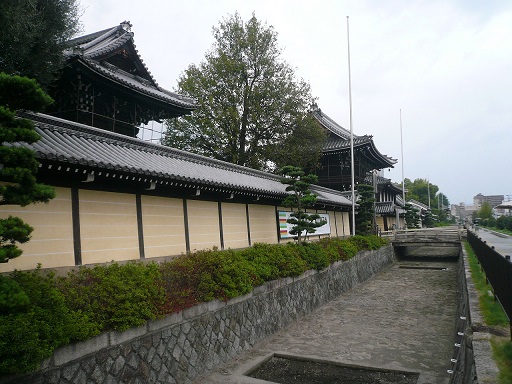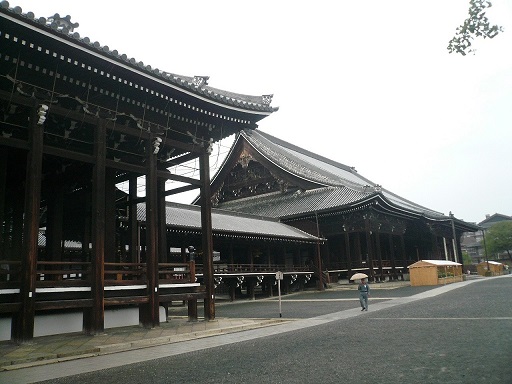In Japan, Buddhism is the major religious, although most Japanese are not devout religious believers.
The most popular denomination of Buddhism in Japan is the "Jodo Shinshu", the True Pure Land denomination of Buddhism.
"Jodo Shinshu" was initiated by SHINRAN in the Kamakura Age.
After a long time the "Jodo Shinshu" denomination was divided into three sects.
One of the sects is "Nishi-Hongwanji" and Nishi-Hongwanji Temple is the main temple of this sect.
Nishi-Hongwanji Temple is located to the northwest of Kyoto Station within 800m distance.
When you arrive at Nishi-Hongwanji Temple, you will see a wall with a roof, both made out of mud along "Horikawa Dori" Avenue.
This is Nishi-Hongwanji Temple.
Moat and Roofed mud wall of Nishi-Hongwanji Temple

As the roofed mud wall is 350m long and because there is a moat in front of the wall, Nishi-Hongwanji Temple looks like a fortress.
"Goeido" Gate and "Amidado" Gate are entrances of Nishi-Hongwanji Temple.
These two gates are very huge and important cultural properties of Japan.

 Home Page in Japanese: "Shane's HomePage"
Home Page in Japanese: "Shane's HomePage"

 Home Page in Japanese: "Shane's HomePage"
Home Page in Japanese: "Shane's HomePage"